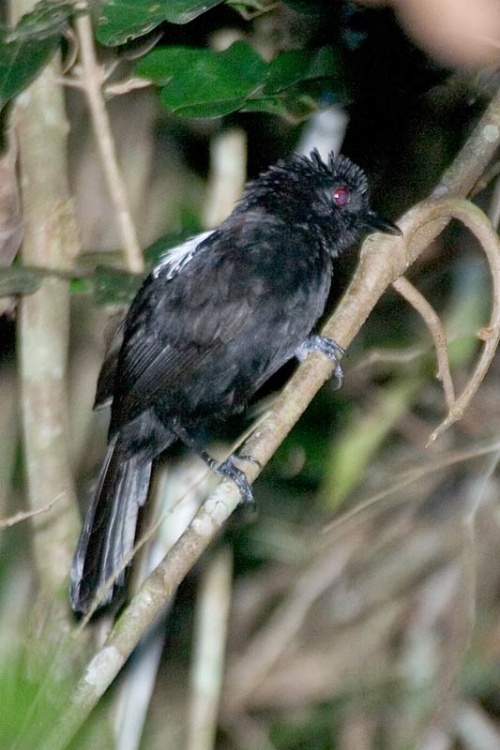m |
(Photo caption. Dictionary link. References) |
||
| Line 1: | Line 1: | ||
{{incomplete}} | {{incomplete}} | ||
| − | [[Image:Fringe-backed_Fire-eye.jpg|thumb| | + | [[Image:Fringe-backed_Fire-eye.jpg|thumb|500px|right|Photo by {{user|Arthur+Grosset|Arthur Grosset}}<br /> Bahia, [[Brazil]], March 2004]] |
;[[: Category:Pyriglena|Pyriglena]] atra | ;[[: Category:Pyriglena|Pyriglena]] atra | ||
| Line 10: | Line 10: | ||
Classified as Endangered by Birdlife International. | Classified as Endangered by Birdlife International. | ||
==Taxonomy== | ==Taxonomy== | ||
| − | This is a monotypic species | + | This is a [[Dictionary_M-S#M|monotypic]] species<sup>[[#References|[1]]]</sup>. |
==Habitat== | ==Habitat== | ||
| − | Lowland forest and secondary woodland | + | Lowland forest and secondary woodland. |
==Behaviour== | ==Behaviour== | ||
| + | ==References== | ||
| + | #{{Ref-Clements6thAug13}}#Arthur Grosset | ||
| + | {{ref}} | ||
==External Links== | ==External Links== | ||
{{GSearch|Pyriglena+atra}} | {{GSearch|Pyriglena+atra}} | ||
[[Category:Birds]][[Category:Pyriglena]] | [[Category:Birds]][[Category:Pyriglena]] | ||
Revision as of 23:16, 2 March 2014
| This article is incomplete. This article is missing one or more sections. You can help the BirdForum Opus by expanding it. |
- Pyriglena atra
Identification
The male is black with a red eye and a large white dorsal patch which looks like that photo of a drop of milk landing and spreading outwards.
Distribution
Endemic to a very small area of north-east Brazil; it is known only from a few highly fragmented areas in Bahia and Sergipe.
Classified as Endangered by Birdlife International.
Taxonomy
This is a monotypic species[1].
Habitat
Lowland forest and secondary woodland.
Behaviour
References
- Clements, J. F., T. S. Schulenberg, M. J. Iliff, B.L. Sullivan, C. L. Wood, and D. Roberson. 2013. The eBird/Clements checklist of birds of the world: Version 6.8., with updates to August 2013. Downloaded from http://www.birds.cornell.edu/clementschecklist/download/
- Arthur Grosset
Recommended Citation
- BirdForum Opus contributors. (2024) Fringe-backed Fire-eye. In: BirdForum, the forum for wild birds and birding. Retrieved 8 May 2024 from https://www.birdforum.net/opus/Fringe-backed_Fire-eye




